

Articles
LED Bulb Flashes When Turned Off
Modified: February 22, 2024
Discover how LED bulbs can flash even when turned off. Read our informative articles on this fascinating phenomenon.
(Many of the links in this article redirect to a specific reviewed product. Your purchase of these products through affiliate links helps to generate commission for Storables.com, at no extra cost. Learn more)
Introduction
LED bulbs have revolutionized the lighting industry with their energy efficiency, longevity, and versatility. These bulbs have become the go-to choice for both residential and commercial spaces due to their numerous advantages. However, there are instances when LED bulbs may exhibit peculiar behavior, such as flashing or flickering even when they are turned off.
In this article, we will explore the reasons behind LED bulb flashing when turned off and discuss possible solutions to troubleshoot this issue. Understanding the root causes will help you identify the problem and take the necessary steps to rectify it.
Key Takeaways:
- LED bulbs may flash when turned off due to ghost voltage, faulty wiring, incompatible dimmer switches, power surges, or defective bulbs. Troubleshooting and addressing these issues can ensure a stable and reliable lighting experience.
- Testing with different bulbs, checking for ghost voltage, inspecting and fixing wiring issues, considering dimmer switch compatibility, using surge protectors or voltage stabilizers, and replacing the LED bulb if necessary are essential troubleshooting steps to resolve the issue of LED bulb flashing when turned off.
Read more: Light Bulb Is Flickering When Turned On
Understanding LED bulbs and their behavior
Before delving into the causes of LED bulb flashing, it is essential to understand how LED bulbs work and how they differ from traditional incandescent bulbs. Unlike incandescent bulbs, LEDs (light-emitting diodes) do not use a glowing filament to produce light. Instead, they rely on the movement of electrons in a semiconductor material to generate illumination.
This unique semiconductor technology makes LED bulbs energy-efficient, as they consume significantly less power compared to incandescent bulbs. LED bulbs also have a considerably longer lifespan and produce less heat, making them a safer lighting option.
Possible causes of LED bulb flashing when turned off
1. Ghost voltage:
In some cases, LED bulbs may flash when turned off due to residual voltage, commonly known as ghost voltage. This phenomenon occurs when a small amount of electricity still flows through the circuit, causing the LED bulb to illuminate briefly. Ghost voltage can be caused by various factors, such as faulty wiring or nearby electrical equipment.
2. Faulty wiring:
Improper wiring or loose connections can lead to erratic behavior of LED bulbs, including flashing. Faulty wiring can create resistance or cause electric current fluctuations, causing the LED bulb to flicker.
3. Incompatible dimmer switches:
If you have installed dimmer switches in your lighting setup, it is crucial to ensure they are compatible with LED bulbs. Some older dimmer switches are designed for use with incandescent bulbs and may not provide the appropriate voltage regulation for LEDs. This can result in flickering or flashing when the bulbs are turned off.
4. Power surge or fluctuation:
Power surges or fluctuations in the electrical supply can affect the performance of LED bulbs. Sudden increases or decreases in voltage can cause LED bulbs to exhibit unusual behavior, including flashing when turned off.
5. Defective LED bulb:
In some cases, the LED bulb itself may be defective. Manufacturing defects, internal wiring issues, or electronic component malfunctions can cause the bulb to flash when it should be off.
Key Takeaways:
- LED bulbs may flash when turned off due to ghost voltage, faulty wiring, incompatible dimmer switches, power surges, or defective bulbs. Troubleshooting and addressing these issues can ensure a stable and reliable lighting experience.
- Testing with different bulbs, checking for ghost voltage, inspecting and fixing wiring issues, considering dimmer switch compatibility, using surge protectors or voltage stabilizers, and replacing the LED bulb if necessary are essential troubleshooting steps to resolve the issue of LED bulb flashing when turned off.
Read more: Light Bulb Is Flickering When Turned On
Understanding LED bulbs and their behavior
LED (Light Emitting Diode) bulbs have gained immense popularity in recent years due to their energy efficiency, long lifespan, and versatility. Unlike traditional incandescent bulbs, LED bulbs produce light through the movement of electrons in a semiconductor material, rather than the use of a glowing filament.
This unique technology offers several benefits. Firstly, LED bulbs consume significantly less energy than their incandescent counterparts. This energy efficiency not only reduces electricity costs but also contributes to environmental sustainability by decreasing greenhouse gas emissions. Secondly, LED bulbs have an exceptionally long lifespan. On average, LED bulbs can last up to 50,000 hours, significantly longer than the 1,000 hours of an incandescent bulb. This longevity translates into reduced maintenance and replacement costs. Lastly, LED bulbs emit negligible heat compared to incandescent bulbs, making them safer and more suitable for various applications.
In terms of behavior, LED bulbs differ from traditional bulbs in several ways. One notable distinction is that LED bulbs do not experience the same gradual dimming effect as incandescent bulbs. Incandescent bulbs gradually dim as they near the end of their lifespan, whereas LED bulbs maintain a consistent level of brightness throughout their operational lifespan. This characteristic ensures uniform lighting, providing a more visually pleasing and reliable lighting experience.
However, LED bulbs can exhibit some peculiar behavior under certain circumstances. One common issue is flickering, where the bulb rapidly turns on and off, resulting in an annoying and distracting effect. Flickering can occur for several reasons, including incompatible dimmer switches, voltage fluctuations, or faulty wiring.
Another behavior that LED bulbs may exhibit is flashing or flickering when they are turned off. This phenomenon can be perplexing for users, as they expect the bulb to stay completely off, without any intermittent illumination. Understanding the causes behind LED bulb flashing when turned off is essential to troubleshoot and resolve the issue effectively.
The flashing of an LED bulb when turned off can be attributed to several factors. One possible cause is residual voltage, also known as ghost voltage. Ghost voltage occurs when there is a small amount of electricity still flowing through the circuit, even when the power is turned off. This residual current can momentarily light up the LED bulb, creating the appearance of flashing. Ghost voltage can be caused by various factors, such as nearby electrical equipment or faulty wiring.
Faulty wiring can also contribute to LED bulb flashing when turned off. Loose connections, improper wiring, or incorrect installation can create resistance or instability in the circuit, resulting in the erratic behavior of the LED bulb. Therefore, it is crucial to ensure that the wiring is properly installed and secured to prevent any potential issues.
Possible causes of LED bulb flashing when turned off
LED bulbs are known for their reliability and long lifespan. However, there can be instances where LED bulbs may exhibit the peculiar behavior of flashing or flickering even when they are turned off. Understanding the possible causes behind this issue can help you identify and resolve the problem effectively.
1. Ghost voltage:
One common cause of LED bulb flashing when turned off is ghost voltage. Ghost voltage refers to a small amount of residual electrical energy that still flows through the circuit, even when the power is switched off. This residual voltage can momentarily power on the LED bulb, causing it to flash. Ghost voltage can be caused by various factors, including nearby electrical equipment or faulty wiring.
2. Faulty wiring:
Improper wiring or loose connections can lead to erratic behavior of LED bulbs, including flashing when turned off. Faulty wiring creates resistance in the circuit or can cause electric current fluctuations, which in turn can cause the LED bulb to flicker or flash. It is important to ensure that the wiring is correctly installed and securely connected to prevent any potential issues.
3. Incompatible dimmer switches:
If you have installed dimmer switches in your lighting setup, it is essential to ensure that they are compatible with LED bulbs. Some older dimmer switches are designed for use with incandescent bulbs and may not provide the appropriate voltage regulation for LED bulbs. As a result, the LED bulb may flicker or flash when the bulbs are turned off. In such cases, replacing the dimmer switch with a compatible one specifically designed for LED bulbs can resolve the issue.
4. Power surge or fluctuation:
Power surges or electrical fluctuations can affect the performance of LED bulbs. Sudden increases or decreases in voltage can cause LED bulbs to exhibit unusual behavior, including flashing when turned off. To protect your LED bulbs from power surges, consider using surge protectors or voltage stabilizers. These devices help regulate the voltage and protect the LED bulbs from damage caused by sudden spikes or drops in the electrical supply.
5. Defective LED bulb:
In some cases, the issue may lie with the LED bulb itself. Manufacturing defects, internal wiring issues, or electronic component malfunctions can cause the bulb to flash when it should be off. If you have tried troubleshooting the other potential causes and the LED bulb continues to flash, it may be necessary to replace the bulb with a new one from a reputable brand.
Identifying the specific cause of LED bulb flashing when turned off can require some troubleshooting. It is recommended to systematically eliminate each potential cause until the issue is resolved. In the next section, we will discuss some troubleshooting steps to help you identify and fix the problem.
Read more: Light Bulb Glows When Switched Off
Ghost voltage
One possible cause of LED bulb flashing when turned off is ghost voltage. Ghost voltage, also known as residual voltage, occurs when a small amount of electrical energy still flows through the circuit even when the power is switched off. This residual voltage can momentarily power on the LED bulb, causing it to flash or flicker.
Ghost voltage can be caused by several factors, including faulty wiring, nearby electrical equipment, or electronic devices that create electromagnetic interference. When the power is turned off, the electrical energy can still remain present within the circuit due to capacitance or inductance effects.
To determine if ghost voltage is the cause of the LED bulb flashing, you can use a multimeter or a non-contact voltage tester. These tools will help you measure the voltage present in the circuit even when the switch is off. If you detect a voltage reading, it indicates the presence of ghost voltage.
To address the issue of ghost voltage, there are a few potential solutions:
- Tighten connections: Ensure that all electrical connections within the circuit are securely tightened. Loose or poorly connected wires can create electrical resistance and contribute to ghost voltage. Check all wire connections and tighten them if necessary.
- Check wiring: Inspect the wiring for any signs of damage or faulty connections. If you notice any frayed wires, exposed conductors, or loose connections, they need to be repaired or replaced. Properly structured and connected wiring reduces the likelihood of ghost voltage occurrence.
- Eliminate nearby electrical devices: Sometimes, nearby electrical devices, such as transformers or power supplies, can cause electromagnetic interference, leading to ghost voltage. Try relocating or unplugging these devices to see if it resolves the issue.
- Install a snubber circuit: A snubber circuit is a device that helps dissipate residual voltage in a circuit. It can be installed across the switch or in the lighting fixture itself to reduce or eliminate ghost voltage. Consult an electrician for guidance on installing a snubber circuit correctly.
If the issue persists even after taking these steps, it may be necessary to consult a licensed electrician for a thorough inspection of your electrical system. They will be able to identify and resolve any underlying issues contributing to the occurrence of ghost voltage.
By addressing the problem of ghost voltage, you can eliminate this potential cause of LED bulb flashing when turned off and ensure a stable and consistent lighting experience in your space.
Faulty wiring
Another possible cause of LED bulb flashing when turned off is faulty wiring. Improper or faulty wiring can create resistance or instability in the electrical circuit, leading to erratic behavior of the LED bulbs.
There are several wiring-related issues that can contribute to LED bulb flashing:
- Loose connections: Loose connections within the wiring can create resistance, causing the electrical current to fluctuate. This fluctuation can result in flickering or flashing of the LED bulbs, even when they are turned off. It is essential to ensure that all wire connections, including wire nuts, terminals, and junction boxes, are securely tightened. Loose or poorly connected wires should be properly rewired and secured.
- Improper grounding: Proper grounding is crucial for maintaining a stable electrical circuit. If the electrical system is not adequately grounded, it can lead to voltage fluctuations and unstable current flow, which can affect the performance of LED bulbs. Verify that the electrical system has proper grounding and consult a licensed electrician if you have any concerns about the grounding in your space.
- Faulty wiring insulation: Damaged or worn-out insulation on the wiring can result in current leakage or short circuits. These electrical irregularities can cause the LED bulbs to flash or flicker. Inspect all wiring for any signs of damage, such as frayed or exposed wires, and replace any faulty wiring immediately.
- Incorrect wiring: Incorrectly wired circuits can lead to voltage imbalances, causing fluctuations that affect the LED bulbs. Ensure that all wiring is correctly installed according to the manufacturer’s instructions and local electrical codes. If you are unsure about the wiring, it is recommended to consult a licensed electrician to verify and rectify any wiring issues.
When troubleshooting faulty wiring as a potential cause of LED bulb flashing when turned off, it is essential to prioritize safety and follow proper electrical procedures. If you are unsure about working with electrical systems or if the issue seems complex, it is always best to seek the assistance of a licensed electrician. They have the expertise and knowledge to diagnose and correct any wiring-related problems.
By addressing and rectifying faulty wiring issues, you can ensure a stable electrical circuit, preventing LED bulb flashing and promoting a reliable and consistent lighting experience in your space.
Incompatible dimmer switches
Incompatible dimmer switches can be another cause of LED bulb flashing when turned off. Dimmer switches are designed to control the intensity of light in a room by regulating the amount of electrical voltage supplied to the bulbs. However, not all dimmer switches are compatible with LED bulbs, especially if they were originally designed for use with incandescent bulbs.
When LED bulbs are connected to incompatible dimmer switches, it can result in flickering or flashing when the bulbs are turned off. This happens because the dimmer switch may not provide the appropriate voltage regulation for LED bulbs, causing inconsistent power delivery.
If you suspect that an incompatible dimmer switch is the cause of LED bulb flashing, there are a few steps you can take to address the issue:
- Check dimmer compatibility: Refer to the manufacturer’s specifications of the dimmer switch and LED bulbs to ensure they are compatible with each other. Look for dimmer switches specifically designed for use with LED bulbs or those labeled as “LED compatible.”
- Replace the dimmer switch: If the current dimmer switch is incompatible with LED bulbs, consider replacing it with a compatible one. Choose a dimmer switch that is specifically designed for use with LED bulbs to ensure smooth dimming and prevent any flickering or flashing issues.
- Upgrade to a modern dimmer: Older dimmer switches may not be equipped to handle the unique electrical characteristics of LED bulbs. Consider upgrading to a more modern and advanced dimmer switch that is specifically designed to work with LED technology. These newer dimmer switches often have improved compatibility and offer smoother dimming functionality.
- Consult an electrician: If you are unsure about the compatibility or installation of dimmer switches, it is best to consult a licensed electrician. They can assess your current setup, recommend suitable dimmer switches, and ensure proper installation to prevent any compatibility issues.
Addressing the issue of incompatible dimmer switches is crucial to ensure optimal performance and longevity of LED bulbs. By using dimmer switches that are specifically designed for LED bulbs, you can enjoy smooth dimming control and eliminate any flashing or flickering problems when the bulbs are turned off.
Power surge or fluctuation
Power surges or fluctuations in the electrical supply can also cause LED bulbs to flash when turned off. A power surge refers to a sudden increase in voltage that exceeds the normal electrical flow, while a power fluctuation refers to rapid changes in voltage levels.
LED bulbs are sensitive to changes in voltage, and sudden power surges or fluctuations can disrupt their normal operation, leading to flashing or flickering. These voltage irregularities can occur due to various factors, such as lightning strikes, power grid malfunctions, or equipment switching on and off in the vicinity.
To protect LED bulbs from power surge-related issues, consider the following measures:
- Surge protectors: Install surge protectors at the main electrical panel or individual outlets to safeguard your LED bulbs from sudden voltage spikes. Surge protectors work by diverting excess electrical energy away from sensitive devices, preventing damage caused by power surges.
- Voltage stabilizers: Consider using voltage stabilizers to regulate and stabilize the electrical voltage supplied to the LED bulbs. Voltage stabilizers are particularly beneficial in areas with frequent power fluctuations, ensuring a consistent voltage to the bulbs and minimizing the chances of flashing or flickering.
- Contact utility company: If you consistently experience power surges or fluctuations, it may be worthwhile to contact your utility company. They can assess the situation and determine if there are any underlying issues with the power grid that need to be addressed.
- Unplug sensitive devices: During thunderstorms or other situations where power surges are likely, unplug sensitive electronic devices, including LED bulbs, to protect them from potential damage. This precautionary measure can help minimize the risk of flashing or flickering caused by sudden voltage changes.
It is worth noting that while power surge or fluctuation can be a potential cause of LED bulb flashing when turned off, it may not be the only contributing factor. It is essential to troubleshoot and address other potential causes as well to ensure a stable and consistent lighting experience.
By implementing surge protection measures and addressing power fluctuations, you can safeguard your LED bulbs and minimize the occurrence of flashing or flickering, even when the bulbs are turned off.
Check the wiring and switch connections to ensure they are secure and properly installed. If the issue persists, consider consulting an electrician to inspect and troubleshoot the problem.
Read more: Why Is An LED Bulb Still Glowing When Off
Defective LED bulb
In some cases, the issue of LED bulb flashing when turned off may be attributed to a defective bulb. Defects in manufacturing, internal wiring issues, or electronic component malfunctions can cause the bulb to behave erratically, including flashing even when it should be off.
If you have followed the troubleshooting steps for other potential causes and the LED bulb continues to flash, it is worth considering the possibility of a defective bulb. Here are some signs that may indicate a faulty LED bulb:
- Inconsistent flashing: A defective LED bulb may exhibit inconsistent flashing patterns, such as flashing at irregular intervals or flashing in different colors. This inconsistency can indicate a problem with the internal components or wiring of the bulb.
- Dim or no light output: If the LED bulb consistently exhibits a dim light output or fails to illuminate at all, even when it should be turned on, it suggests a defect in the bulb’s electrical components.
- Physical damage: Visual inspection of the LED bulb may reveal physical damage, such as cracks, chips, or loose connections. These signs of physical damage can disrupt the proper functioning of the bulb and contribute to flashing or other irregular behavior.
- Replacement with a different bulb: To further isolate the issue, you can try replacing the LED bulb with a different bulb of the same type and wattage. If the replacement bulb functions properly without flashing when turned off, it indicates that the original LED bulb was defective.
If you determine that the LED bulb is indeed defective, here are the steps you can take:
- Return or exchange: If you have recently purchased the LED bulb, check the return policy of the store or contact the manufacturer to inquire about a return or exchange. Provide them with details about the defect and any evidence (such as photos or videos) that support your claim.
- Warranty claim: If the LED bulb is still within the warranty period, contact the manufacturer to initiate a warranty claim. Follow their instructions for returning the defective bulb and obtaining a replacement or refund.
- Dispose of properly: In the case of a completely non-functional LED bulb, dispose of it properly according to local regulations for electronic waste. Check with your local municipality or recycling center for guidance on the appropriate disposal methods.
It is important to note that while defects in LED bulbs are relatively rare, they can still occur. By identifying and addressing a defective LED bulb, you can ensure a reliable and consistent lighting experience in your space.
How to troubleshoot LED bulb flashing issue
If you are experiencing the issue of LED bulb flashing when turned off, troubleshooting the problem can help identify the underlying cause and implement appropriate solutions. Here are some steps you can take to troubleshoot the LED bulb flashing issue:
- Test with different bulbs: Replace the flashing LED bulb with a different bulb of the same type and wattage. If the replacement bulb functions properly without flashing when turned off, it indicates that the original LED bulb was defective. Proceed with returning or replacing the defective bulb.
- Check for ghost voltage: Use a multimeter or a non-contact voltage tester to check for the presence of ghost voltage. Turn off the power to the circuit and test the voltage at the bulb socket. If you detect any voltage readings, it indicates the presence of ghost voltage. Addressing this issue involves tightening connections, checking wiring, and eliminating nearby electrical equipment.
- Inspect and fix wiring issues: Inspect the wiring connected to the LED bulb. Look for loose connections, damaged insulation, or incorrect installation. Securely tighten any loose connections, repair or replace any damaged wiring, and ensure proper grounding. Faulty wiring can cause LED bulb flashing or flickering, even when the bulb is turned off.
- Consider dimmer switch compatibility: If you have installed dimmer switches, verify their compatibility with LED bulbs. Incompatible dimmer switches can cause flashing or flickering issues. Replace the dimmer switches with ones specifically designed for use with LED bulbs to ensure smooth performance.
- Use surge protectors or voltage stabilizers: Install surge protectors or voltage stabilizers to protect the LED bulbs from power surges or fluctuations. These devices regulate the voltage supply and prevent damage caused by sudden voltage spikes or drops.
- Replace the LED bulb: If all else fails and the LED bulb continues to flash when turned off, it may be necessary to replace the bulb. Ensure that the replacement bulb is of the same type, wattage, and compatibility as the previous one. Opt for reputable brands and consider warranties for added peace of mind.
While troubleshooting the LED bulb flashing issue, it is important to prioritize safety and exercise caution when working with electrical components. If you are unsure about any steps or if the issue seems complex, it is advisable to seek the assistance of a licensed electrician. They have the expertise to diagnose and resolve electrical issues effectively.
By systematically troubleshooting and addressing the potential causes of LED bulb flashing, you can resolve the issue and enjoy a steady and reliable lighting experience in your space.
Test with different bulbs
One of the first steps to troubleshoot the issue of LED bulb flashing when turned off is to test the problematic bulb with a different bulb of the same type and wattage. This test will help determine if the flashing issue is specific to the LED bulb or if there is another underlying cause.
Here’s how you can test with different bulbs:
- Select a replacement bulb: Choose a different LED bulb of the same type and wattage as the problematic bulb. It is important to use the same specifications to ensure an accurate comparison.
- Turn off the power: Before removing or replacing the bulbs, make sure to turn off the power to the circuit. This step is crucial for your safety and to avoid any potential electrical hazards.
- Remove the problematic bulb: Carefully unscrew and remove the LED bulb that is flashing when turned off. Set it aside for further examination or replacement if needed.
- Install the replacement bulb: Insert the replacement LED bulb into the same socket where the problematic bulb was previously installed. Screw it in until it is securely in place.
- Restore power: Turn the power back on to the circuit and observe the behavior of the replacement bulb. Pay close attention to whether it flashes or remains off when the power is turned off.
- Compare the results: Compare the behavior of the replacement bulb with the original problematic bulb. If the replacement bulb functions properly without flashing when turned off, it indicates that the original LED bulb was defective.
If the replacement bulb shows the same flashing issue when turned off, it suggests that there may be another underlying cause. In such cases, proceed with further troubleshooting steps to identify and address the root cause.
By testing with different bulbs, you can determine if the flashing issue is isolated to a specific bulb or if there are other factors contributing to the problem. If the original bulb is indeed defective, it is recommended to return or replace it according to the manufacturer’s warranty or contact the place of purchase for further assistance.
Check for ghost voltage
When troubleshooting the issue of LED bulb flashing when turned off, it is important to check for the presence of ghost voltage. Ghost voltage refers to a small amount of residual electrical energy that can still flow through the circuit, even when the power is switched off. This residual voltage can cause LED bulbs to flash or flicker intermittently.
Here’s how you can check for ghost voltage:
- Gather the necessary tools: To check for ghost voltage, you will need a multimeter or a non-contact voltage tester. These tools allow you to measure the presence of electrical voltage without direct contact with the wires.
- Turn off the power: Before conducting any tests, make sure to turn off the power to the circuit where the LED bulb is installed. This step is crucial for your safety and prevents any potential electrical shock.
- Prepare the multimeter or voltage tester: Set the multimeter to measure AC voltage or prepare the non-contact voltage tester according to the manufacturer’s instructions. If using a multimeter, ensure that it is properly calibrated for the range of voltage being tested.
- Test the bulb socket: Place the multimeter probes or the non-contact voltage tester close to the LED bulb socket (without touching the electrical contacts). Ensure that the probes or tester are making sufficient contact with the metal parts of the socket.
- Observe the readings: If the multimeter displays any voltage readings or if the non-contact voltage tester indicates the presence of voltage, it suggests the presence of ghost voltage. Ghost voltage can cause LED bulbs to momentarily illuminate or flash when turned off.
- Address the issue: If ghost voltage is detected, it is important to address the underlying cause. Some possible causes of ghost voltage include faulty wiring, nearby electrical equipment, or improper grounding. Tighten connections, check for damaged wiring, and eliminate any sources of electromagnetic interference to mitigate the issue.
It is worth noting that the presence of ghost voltage does not necessarily indicate a significant electrical problem. However, it is best to address the issue to ensure the proper functioning of the LED bulb and prevent any potential electrical hazards.
If you are unsure about working with electrical components or if the issue seems complex, it is recommended to seek the assistance of a licensed electrician. They have the expertise to diagnose and resolve electrical issues effectively.
By checking for ghost voltage, you can identify any potential sources of electrical interference and take appropriate measures to ensure the smooth operation of the LED bulb.
Read more: When To Turn Off The Air Conditioner
Inspect and fix wiring issues
When troubleshooting the issue of LED bulb flashing when turned off, it is crucial to inspect and address any potential wiring issues. Faulty or improper wiring can contribute to the erratic behavior of LED bulbs, including flashing or flickering even when they are turned off.
Here are the steps to inspect and fix wiring issues:
- Turn off the power: Before inspecting any wiring, ensure that the power to the affected circuit is turned off. This precaution is essential for your safety and to avoid any potential electrical hazards.
- Visual inspection: Carefully examine the wiring connected to the LED bulb. Look for any signs of damage, such as frayed or exposed wires, loose connections, or improper insulation. Pay close attention to the wiring at the bulb socket, junction boxes, and any connections along the circuit.
- Tighten connections: Ensure that all electrical connections within the circuit are securely tightened. Loose connections can create electrical resistance and contribute to LED bulb flashing. Use a screwdriver or pliers to tighten wire nuts, terminals, and other connectors.
- Repair or replace damaged wiring: If you notice any frayed, exposed, or damaged wiring, it is important to repair or replace it promptly. Cut out any damaged sections of the wire and strip the insulation to expose fresh, undamaged wire. Use wire connectors or wire nuts to securely reconnect the wiring.
- Proper grounding: Verify that the electrical system is properly grounded. Poor grounding can lead to voltage fluctuations and instability in the circuit, affecting the performance of LED bulbs. Consult a licensed electrician if you have concerns about the grounding in your space.
- Check wire routing: Ensure that the wiring is correctly routed and secured. Avoid exposing the wires to sharp edges or areas with high heat or excessive moisture. Properly secured wiring reduces the risk of damage and helps maintain a stable electrical circuit.
If you have limited experience with electrical work or if the issue seems complex, it is advisable to consult a licensed electrician. They have the expertise to diagnose and resolve wiring-related issues effectively and safely.
By inspecting and fixing wiring issues, you can ensure proper electrical connectivity, minimize resistance, and promote stable operation of the LED bulbs. This, in turn, reduces the chances of flashing or flickering when the bulbs are turned off.
Consider dimmer switch compatibility
When troubleshooting the issue of LED bulb flashing when turned off, it is important to consider the compatibility of the dimmer switch with the LED bulbs. Dimmer switches are used to adjust the brightness of the lights, but not all dimmer switches are designed to work effectively with LED bulbs. Using an incompatible dimmer switch can cause flickering or flashing issues.
Here are the steps to consider dimmer switch compatibility:
- Check the dimmer switch specifications: Review the specifications or documentation of the dimmer switch to determine if it is compatible with LED bulbs. Look for any specific compatibility guidelines provided by the manufacturer.
- Verify the type of dimmer switch: Determine if the dimmer switch is designed for use with incandescent bulbs or if it is specifically compatible with LED bulbs. Older dimmer switches may not be built to regulate the lower voltage requirements of LED bulbs, resulting in inconsistent power supply and flashing issues.
- Replace the dimmer switch: If the existing dimmer switch is not compatible with LED bulbs, consider replacing it with one that is specifically designed for use with LED technology. Look for LED-compatible dimmer switches that provide smooth and flicker-free dimming performance.
- Choose the right dimmer switch: When selecting a new dimmer switch, ensure it is suitable for the specific LED bulbs you are using. LED bulbs come in different dimming compatibility types, such as leading-edge or trailing-edge dimming. Match the dimmer switch type to the compatibility requirements of your LED bulbs to optimize performance.
- Installation and adjustment: Follow the manufacturer’s instructions for installing and adjusting the dimmer switch properly. Improper installation or adjustment can affect the dimming performance and lead to flashing or flickering of the LED bulbs.
- Observe the bulb behavior: After replacing or installing a compatible dimmer switch, observe the behavior of the LED bulbs. Check if the flashing or flickering issue is resolved when the bulbs are turned off. If the problem persists, further troubleshooting may be required.
If you are unsure about working with dimmer switches or electrical components, it is recommended to consult a licensed electrician. They can provide guidance on dimmer switch compatibility and ensure that the installation is done correctly.
By using dimmer switches that are compatible with LED bulbs, you can avoid compatibility issues and achieve smooth, consistent dimming without any flashing or flickering when the bulbs are turned off.
Use surge protectors or voltage stabilizers
When troubleshooting the issue of LED bulb flashing when turned off, it is important to consider the role of power surges or fluctuations in causing the problem. Power surges refer to sudden, brief increases in electrical voltage, while power fluctuations involve rapid changes in voltage levels.
LED bulbs are sensitive to voltage irregularities, and sudden power surges or fluctuations can disrupt their normal operation, leading to flashing or flickering even when the bulbs are turned off.
Here are the steps to consider using surge protectors or voltage stabilizers:
- Assess the frequency of power surges or fluctuations: Determine if power surges or fluctuations are common in your area. If you experience frequent electrical disturbances, it is crucial to implement protective measures.
- Install surge protectors: Surge protectors are devices that help safeguard electrical devices from voltage spikes caused by power surges. Install surge protectors at the main electrical panel or individual outlets to protect the LED bulbs and other electronic devices from sudden voltage spikes. Make sure the surge protector is compatible with LED bulbs and has an appropriate joule rating to handle the load.
- Consider whole-house surge protection: For comprehensive protection against power surges, you may want to consider installing a whole-house surge protector. These devices are installed at the main electrical panel and provide enhanced protection for all electrical circuits in your home.
- Use voltage stabilizers: Voltage stabilizers, also known as voltage regulators, help regulate and stabilize the electrical voltage supplied to electronic devices. They prevent voltage fluctuations and ensure a consistent voltage supply to the LED bulbs, minimizing the chances of flashing or flickering.
- Consult an electrician: If you are unsure about the installation of surge protectors or voltage stabilizers, it is advisable to consult a licensed electrician. They have the expertise to assess your electrical system and recommend the appropriate protection measures.
By using surge protectors or voltage stabilizers, you can mitigate the risks of power surges or fluctuations, safeguard your LED bulbs, and maintain stable operation. These protective devices help extend the lifespan of your LED bulbs and ensure a reliable lighting experience.
Remember to follow the manufacturer’s instructions for installation and maintenance of surge protectors or voltage stabilizers to ensure their effectiveness and continued protection.
Replace the LED bulb
If you have exhausted all other troubleshooting steps and the issue of LED bulb flashing when turned off persists, it may be necessary to replace the LED bulb. Sometimes, a defective or incompatible LED bulb can be the root cause of the problem.
Here are the steps to consider when replacing the LED bulb:
- Observe the behavior: Take note of how the LED bulb flashes or flickers when turned off. Make sure to observe whether the flashing is consistent or intermittent and note any specific patterns or colors associated with the flashing.
- Select a replacement: Choose a new LED bulb that matches the specifications of the previous bulb, including the type, wattage, and compatibility. Opt for reputable brands and consider reading reviews to find a reliable replacement bulb.
- Turn off the power: Before replacing the LED bulb, ensure that the power to the circuit is turned off. This step is crucial for your safety and to avoid any potential electrical hazards.
- Remove the old bulb: Carefully unscrew and remove the problematic LED bulb from the socket. Avoid applying excessive force, as it may damage the bulb or the socket.
- Install the new bulb: Insert the new LED bulb into the socket and screw it in until it is securely in place. Ensure that it is properly aligned and seated in the socket.
- Turn on the power: Restore the power to the circuit and observe the behavior of the new LED bulb. Check if the flashing issue is resolved when the bulb is turned off. If the new bulb functions properly without any flashing, it indicates that the previous bulb was defective or incompatible.
- Dispose of the old bulb: If the old LED bulb is no longer functional or was determined to be defective, dispose of it properly according to local regulations for electronic waste. Check with your local municipality or recycling center for guidance on the appropriate disposal methods.
If the replacement LED bulb still exhibits flashing when turned off, it may indicate that there is an underlying electrical or wiring issue. In such cases, it is recommended to consult a licensed electrician for a thorough inspection and further troubleshooting.
By replacing the LED bulb, you can eliminate any potential defects or incompatibility and restore normal functioning to your lighting system. Ensure that the replacement bulb is of good quality and suitable for your specific requirements to prevent any future flashing issues.
Read more: How To Change Turn Signal Light Bulb
Conclusion
LED bulbs offer numerous benefits, including energy efficiency, longevity, and versatility, making them a popular choice for lighting solutions. However, experiencing the issue of LED bulb flashing when turned off can be frustrating and puzzling. By understanding the possible causes and following the necessary troubleshooting steps, you can identify and resolve the problem.
In this article, we explored the potential causes of LED bulb flashing when turned off, including ghost voltage, faulty wiring, incompatible dimmer switches, power surges or fluctuations, and defective LED bulbs. We discussed how to troubleshoot these issues, such as testing with different bulbs, checking for ghost voltage, inspecting and fixing wiring issues, considering dimmer switch compatibility, using surge protectors or voltage stabilizers, and replacing the LED bulb if necessary.
It is important to prioritize safety when troubleshooting electrical issues. If you are unsure about any steps or if the problem persists despite troubleshooting efforts, it is recommended to consult a licensed electrician for assistance. They have the expertise and knowledge to diagnose and resolve complex electrical issues effectively.
By addressing the root causes of LED bulb flashing, you can ensure a stable and reliable lighting experience. Troubleshooting the issue allows you to pinpoint the specific problem and implement appropriate solutions, whether that involves replacing a defective bulb, fixing wiring issues, or upgrading dimmer switches.
Remember, proper maintenance, regular inspections, and using quality LED bulbs can help prevent future flashing or flickering issues. With the right troubleshooting techniques and appropriate measures in place, you can enjoy the benefits of LED lighting without any unwanted flashing when the bulbs are turned off.
Frequently Asked Questions about LED Bulb Flashes When Turned Off
Was this page helpful?
At Storables.com, we guarantee accurate and reliable information. Our content, validated by Expert Board Contributors, is crafted following stringent Editorial Policies. We're committed to providing you with well-researched, expert-backed insights for all your informational needs.
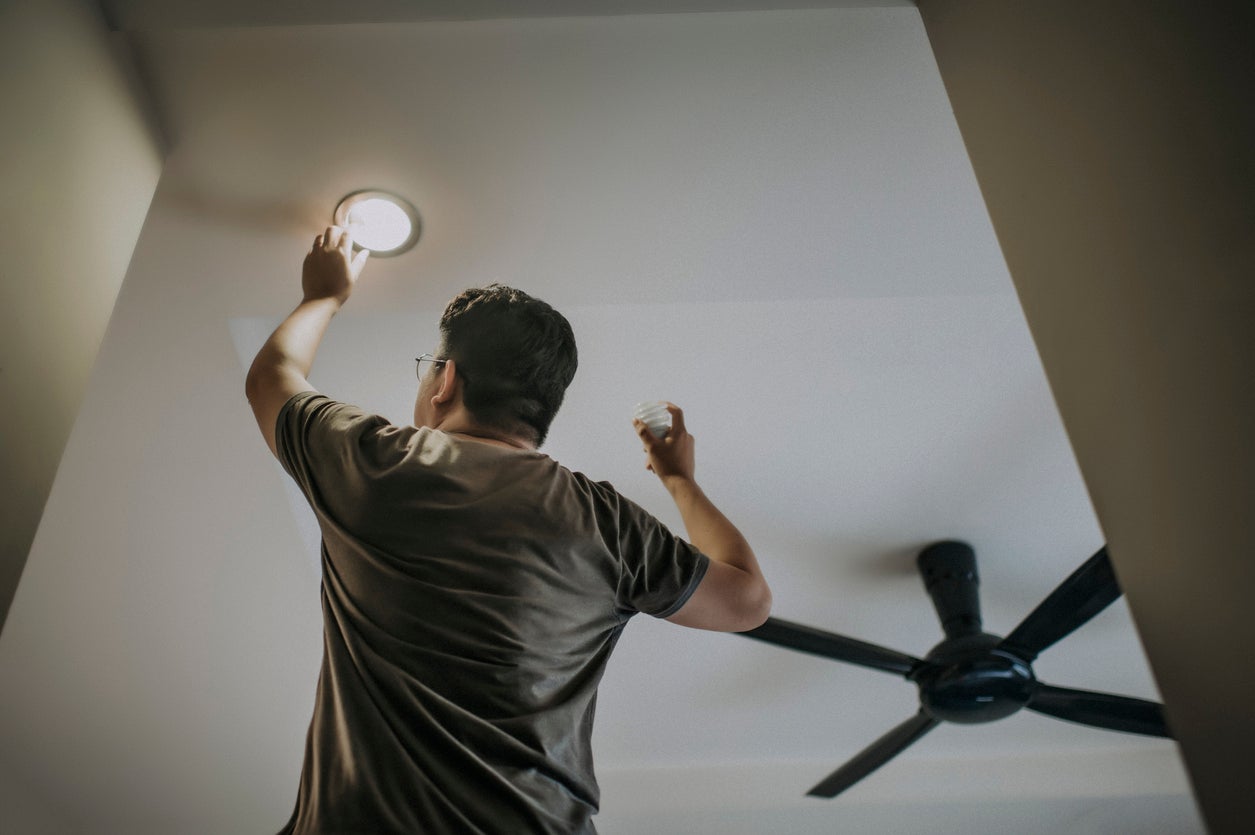


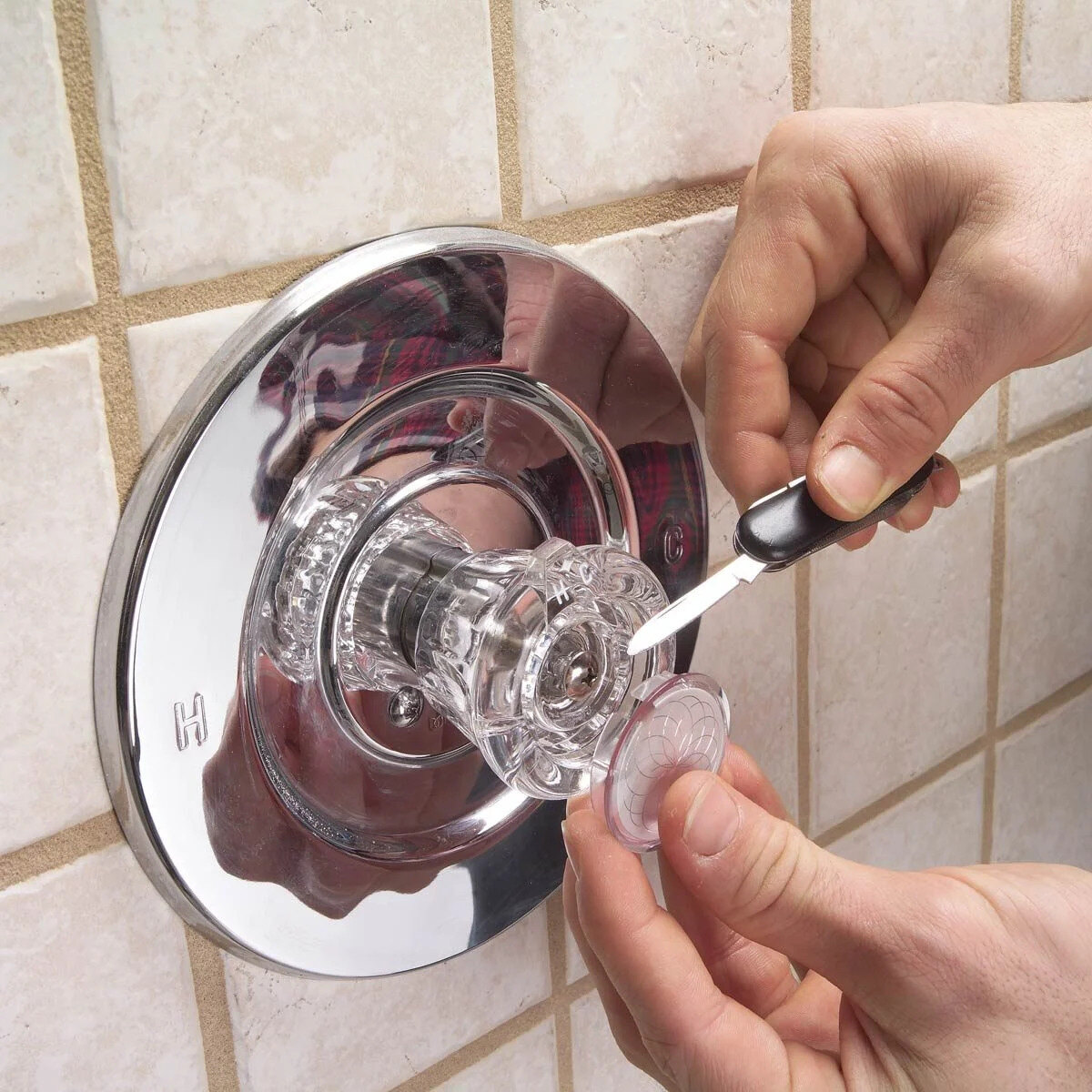
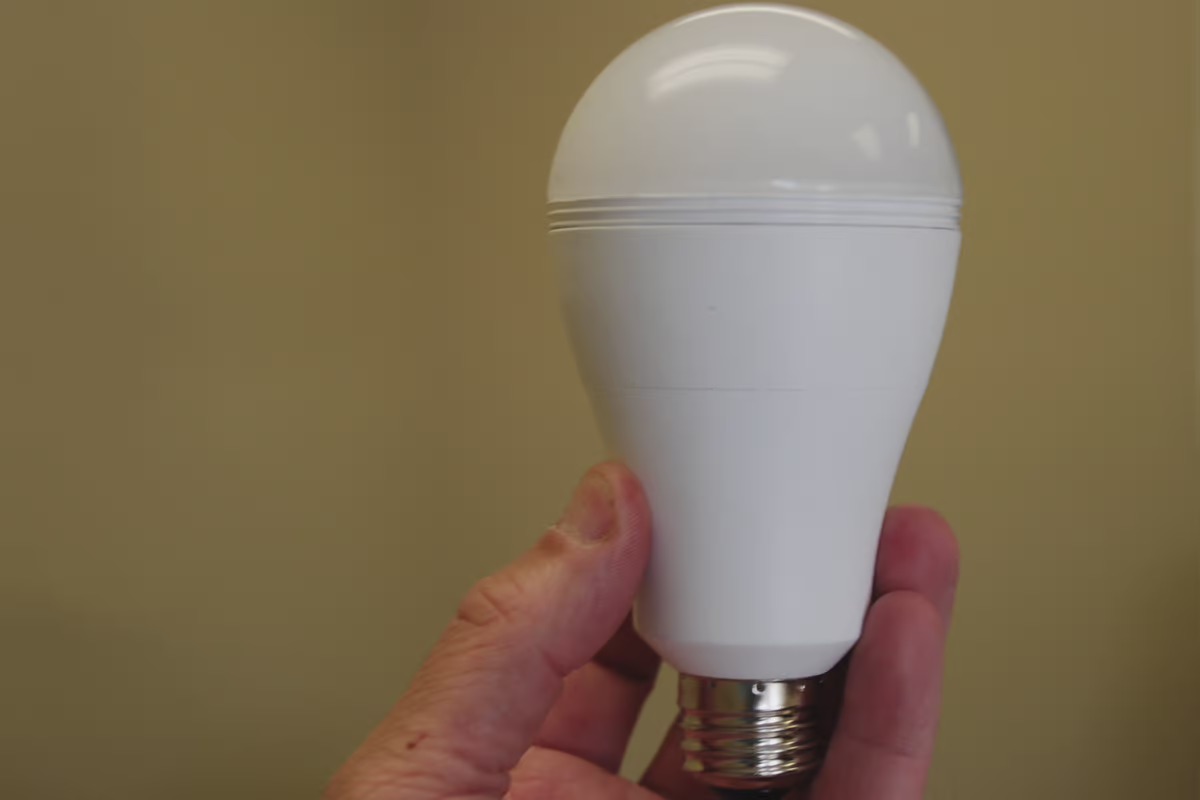
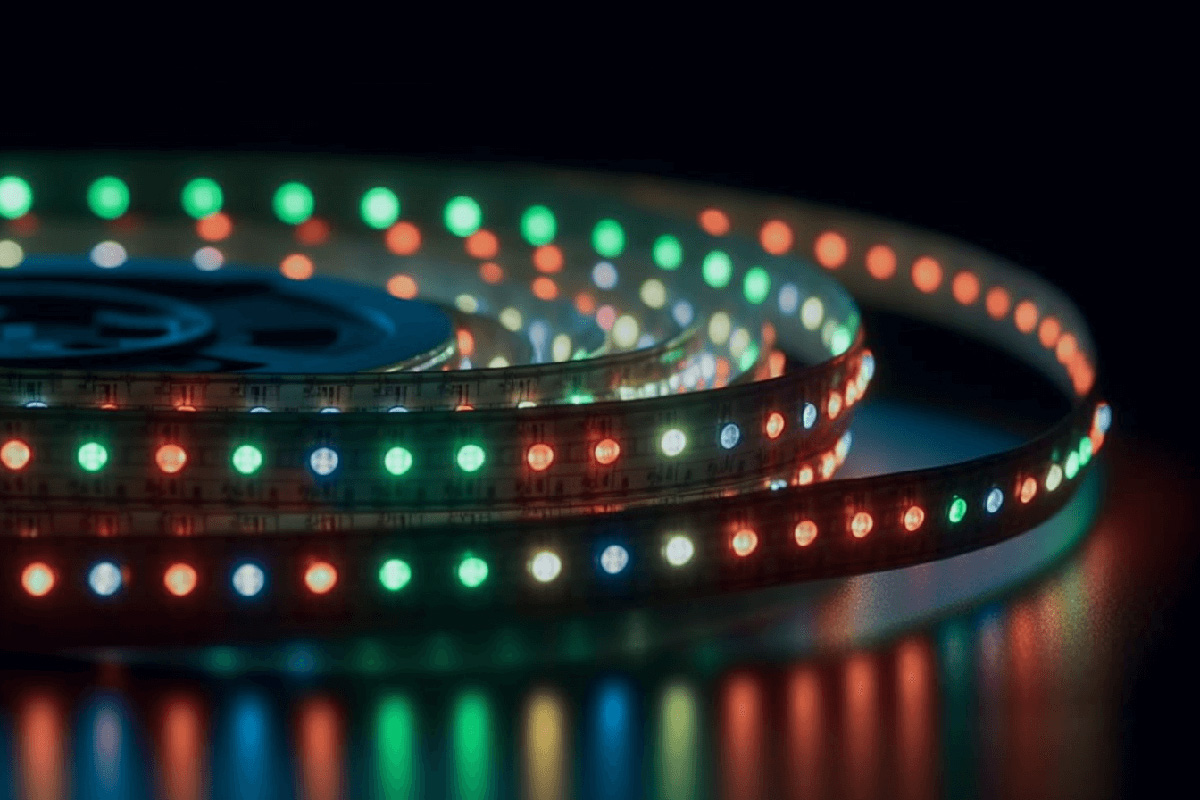


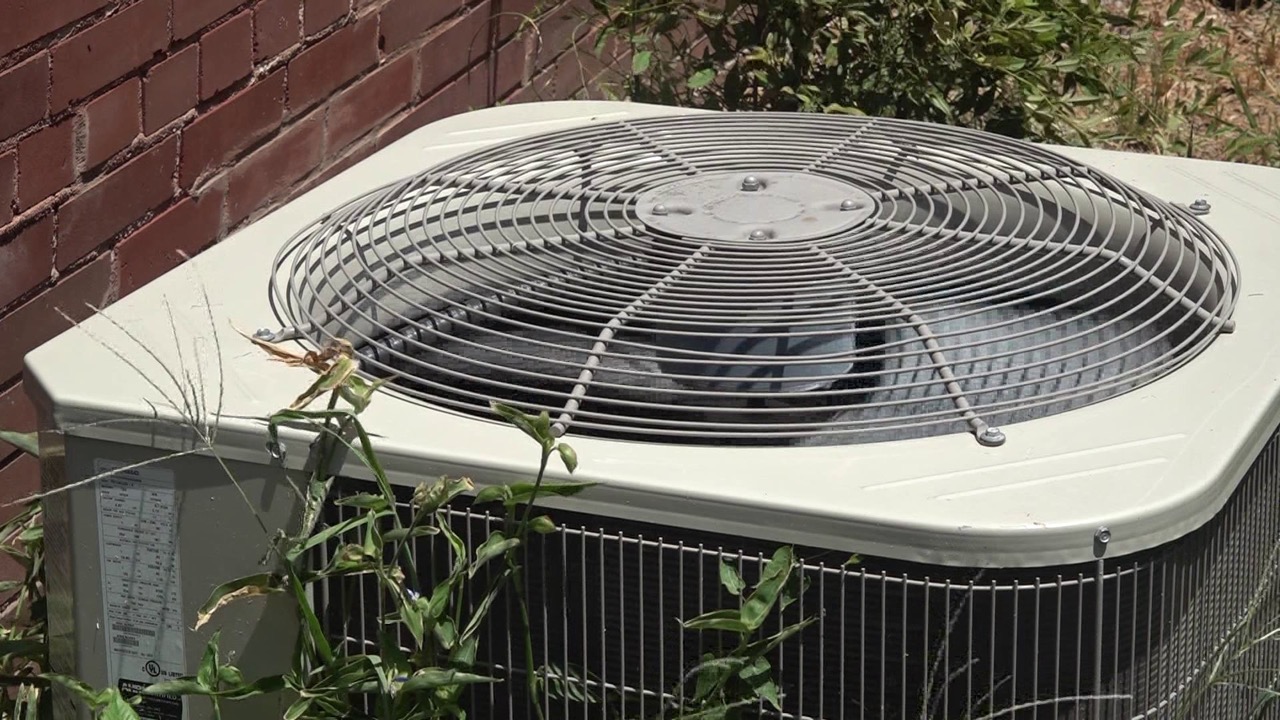

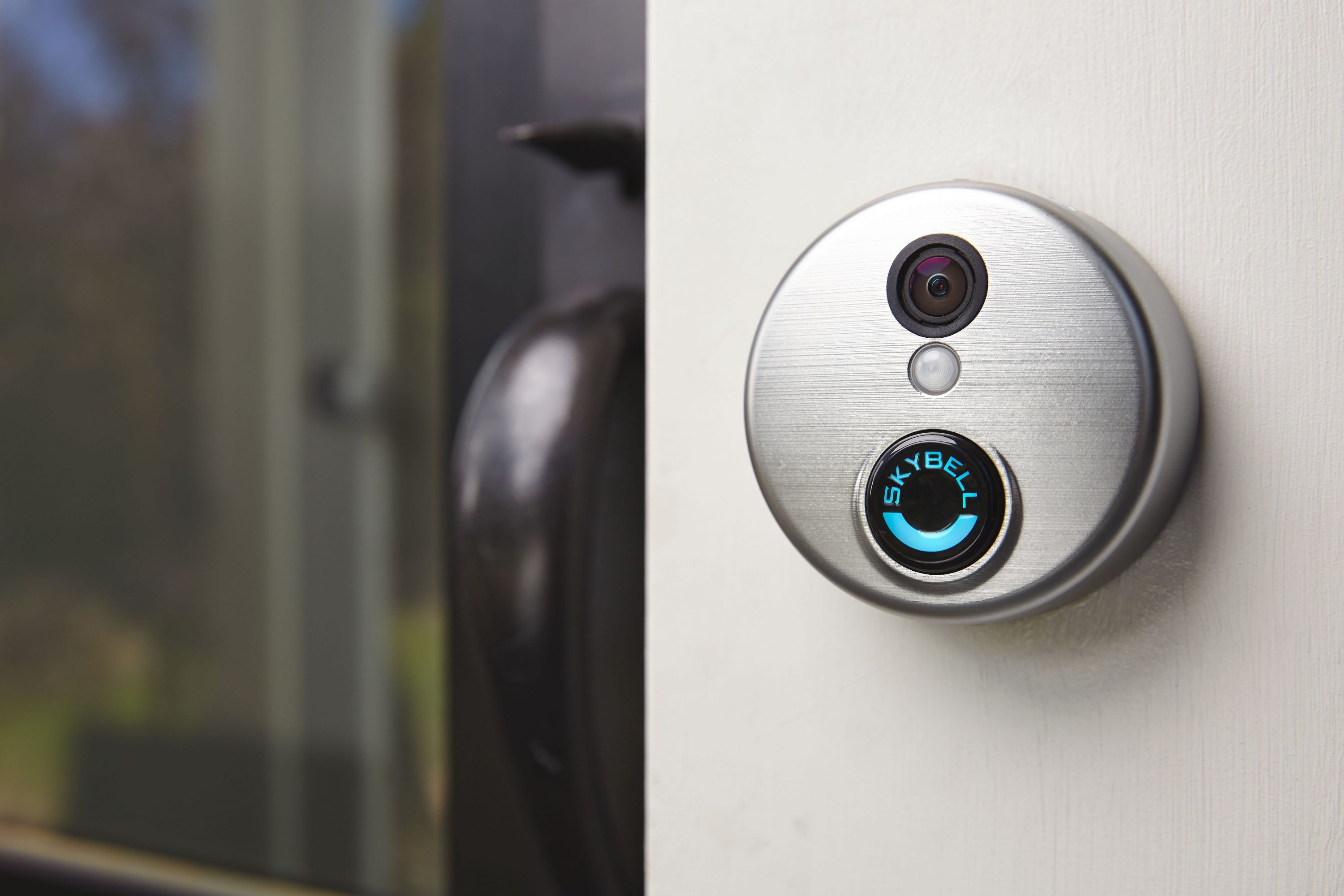

0 thoughts on “LED Bulb Flashes When Turned Off”